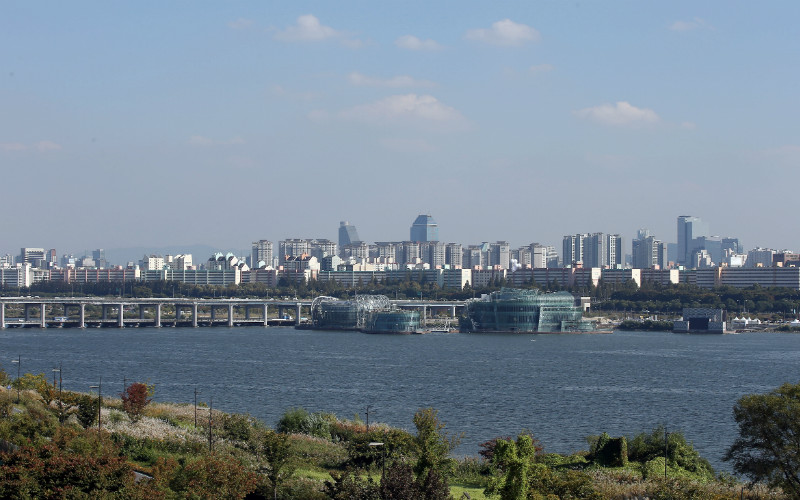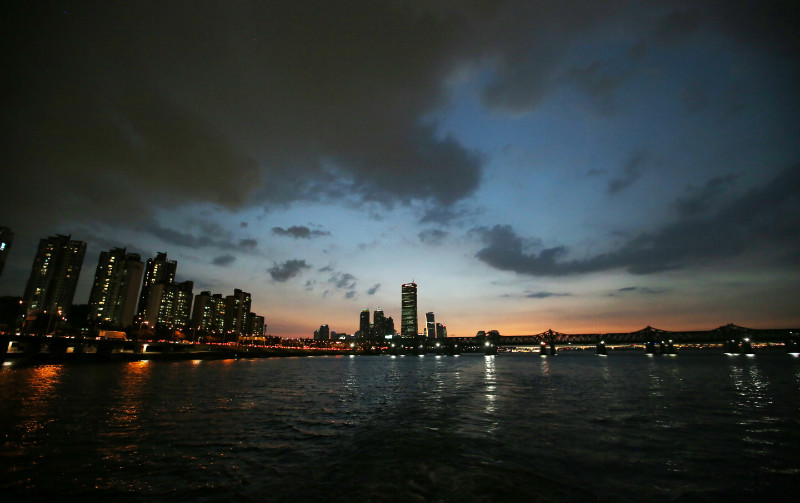View this article in another language
- 한국어
- English
- 日本語
- 中文
- العربية
- Español
- Français
- Deutsch
- Pусский
- Tiếng Việt
- Indonesian
By Honorary Reporter Mercy Mma Agbagha from Nigeria
Photos = Korea.net DB

Orchestrated by the Soviet Union and the U.S., the division of the Korean Peninsula began at the end of World War II in 1945. This partitioning gave birth to the Republic of (South) Korea in the peninsula's southern half and the Democratic People's Republic of (North) Korea (DPRK) in the northern section. In 1948, South Korea declared itself a nation but had the dubious distinction of being considered one of the world's poorest since economic activities and infrastructure including electricity and industry were mostly situated in North Korea. Though the South had a predominantly agrarian economy, it could not support its people as there was nothing to fall back on.
South Korea's situation quickly went from bad to worse after the Korean War that raged from 1950-53, making the country even more impoverished. At this juncture, the nation was left at the mercy of foreign aid to survive, and this period was marked by stagnation, deprivation, embezzlement, corruption and the threat of another war with the North.
 During the 1960-96 period, however, the South achieved remarkable economic growth as industrialization, large-scale production, urbanization and an export boom peaked during this time under an economic transformation dubbed the "miracle on the Han (Hangang River)." The country took just three decades to advance from an underdeveloped to a developed country. Developing countries need to borrow a page from South Korea's book on development to improve on their low levels of productivity, lack of technical knowhow and technology, high unemployment and underdeveloped economies.
During the 1960-96 period, however, the South achieved remarkable economic growth as industrialization, large-scale production, urbanization and an export boom peaked during this time under an economic transformation dubbed the "miracle on the Han (Hangang River)." The country took just three decades to advance from an underdeveloped to a developed country. Developing countries need to borrow a page from South Korea's book on development to improve on their low levels of productivity, lack of technical knowhow and technology, high unemployment and underdeveloped economies.
Developing countries first need to tackle the problem of unskilled labor and increase professionalism across their economies. According to American politician Madeleine M. Kunin, "A skilled worker, regardless of the job description, remains a treasure." The manner through which Korea achieve its economic miracle was not rocket science. The country first focused on the issue of unskilled labor immediately after its foundation; its initial move to this end was repatriation of all Japanese, an action that affected the supply of skilled workers. The education revolution that followed got a large number of students enrolled in primary, secondary and tertiary institutions and adult education centers.
Developing countries need to utilize their full powers without undue and unnecessary external interference. South Korea had to break from its external shackles to override vested interests and formulate policies that had the best interests of the people in mind. Land reform also played a major role in the country's success. At the time, just 3% of the population owned 64% of all the land, thus the government passed a law limiting property ownership to three hectares. This reform thus allowed more people to become landowners and also supported the promotion of entrepreneurship. In developing countries, land ownership is a sign of affluence and the majority of landowners are the rich. The average entrepreneur in such nations thus cannot afford the high cost of purchasing land.
South Korea thrived because of its ability to curb corruption and hold public officials accountable. Developing countries are known for nefarious corruption, with illegalities in some of them being part and parcel of daily life. These practices lead to corruption's end products of stagnation and impoverishment. If leaders with integrity, uprightness and foresight are given the opportunity to handle a nation's affairs just like Park Chung-hee in South Korea and others, then developing countries will be transformed.
Nevertheless, credit must go to the following core values as reasons behind South Korea's success: hard work, education, discipline, uprightness, integrity and family. If developing countries can learn a thing or two from this successful model, the sky is the limit.
chaey0726@korea.kr
*This article is written by a Korea.net Honorary Reporter. Our group of Honorary Reporters are from all around the world, and they share with Korea.net their love and passion for all things Korean.
Photos = Korea.net DB

Orchestrated by the Soviet Union and the U.S., the division of the Korean Peninsula began at the end of World War II in 1945. This partitioning gave birth to the Republic of (South) Korea in the peninsula's southern half and the Democratic People's Republic of (North) Korea (DPRK) in the northern section. In 1948, South Korea declared itself a nation but had the dubious distinction of being considered one of the world's poorest since economic activities and infrastructure including electricity and industry were mostly situated in North Korea. Though the South had a predominantly agrarian economy, it could not support its people as there was nothing to fall back on.
South Korea's situation quickly went from bad to worse after the Korean War that raged from 1950-53, making the country even more impoverished. At this juncture, the nation was left at the mercy of foreign aid to survive, and this period was marked by stagnation, deprivation, embezzlement, corruption and the threat of another war with the North.

Developing countries first need to tackle the problem of unskilled labor and increase professionalism across their economies. According to American politician Madeleine M. Kunin, "A skilled worker, regardless of the job description, remains a treasure." The manner through which Korea achieve its economic miracle was not rocket science. The country first focused on the issue of unskilled labor immediately after its foundation; its initial move to this end was repatriation of all Japanese, an action that affected the supply of skilled workers. The education revolution that followed got a large number of students enrolled in primary, secondary and tertiary institutions and adult education centers.
Developing countries need to utilize their full powers without undue and unnecessary external interference. South Korea had to break from its external shackles to override vested interests and formulate policies that had the best interests of the people in mind. Land reform also played a major role in the country's success. At the time, just 3% of the population owned 64% of all the land, thus the government passed a law limiting property ownership to three hectares. This reform thus allowed more people to become landowners and also supported the promotion of entrepreneurship. In developing countries, land ownership is a sign of affluence and the majority of landowners are the rich. The average entrepreneur in such nations thus cannot afford the high cost of purchasing land.
South Korea thrived because of its ability to curb corruption and hold public officials accountable. Developing countries are known for nefarious corruption, with illegalities in some of them being part and parcel of daily life. These practices lead to corruption's end products of stagnation and impoverishment. If leaders with integrity, uprightness and foresight are given the opportunity to handle a nation's affairs just like Park Chung-hee in South Korea and others, then developing countries will be transformed.
Nevertheless, credit must go to the following core values as reasons behind South Korea's success: hard work, education, discipline, uprightness, integrity and family. If developing countries can learn a thing or two from this successful model, the sky is the limit.
chaey0726@korea.kr
*This article is written by a Korea.net Honorary Reporter. Our group of Honorary Reporters are from all around the world, and they share with Korea.net their love and passion for all things Korean.